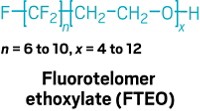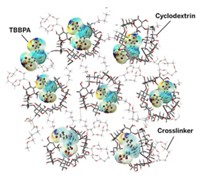Advertisement
Grab your lab coat. Let's get started
Welcome!
Welcome!
Create an account below to get 6 C&EN articles per month, receive newsletters and more - all free.
It seems this is your first time logging in online. Please enter the following information to continue.
As an ACS member you automatically get access to this site. All we need is few more details to create your reading experience.
Not you? Sign in with a different account.
Not you? Sign in with a different account.
ERROR 1
ERROR 1
ERROR 2
ERROR 2
ERROR 2
ERROR 2
ERROR 2
Password and Confirm password must match.
If you have an ACS member number, please enter it here so we can link this account to your membership. (optional)
ERROR 2
ACS values your privacy. By submitting your information, you are gaining access to C&EN and subscribing to our weekly newsletter. We use the information you provide to make your reading experience better, and we will never sell your data to third party members.
Analytical Chemistry
Water Samples Yield Their Secrets
Contamination: A new approach identifies nonpolar and semipolar organic pollutants, even at trace levels
by Rajendrani Mukhopadhyay
March 15, 2011

Because polluted water can contain a wide range of chemicals and concentrations, a sensitive approach is necessary. Researchers have now developed an automated way to identify and quantify even trace levels of organic pollutants in wastewater and rivers (Anal. Chem., DOI: 10.1021/ac102909g).
To catch pollutants at trace levels, environmental chemist María José Góméz at The Madrid Institute of Advanced Studies in Water Technologies and her team began with a simple concentration step with a polymer-coated stir bar. They spun the stir bar in a heated water sample overnight. To encourage pollutants to absorb into the polymer, the investigators added methanol and table salt to the sample.
The next day, the investigators heated the polymer to release the pollutants. They separated these compounds using two rounds of gas chromatography and then identified and measured them with mass spectrometry. The method could detect most compounds in the sample, which included pesticides and polycyclic aromatic hydrocarbons, at concentrations below1 ng/L, a detection level that was similar to or better than other available methods.
The team tested their method on Spain's Henares River, which receives effluent from a wastewater treatment plant. They compared samples to each other to see how the pollutants from the effluents changed over time and space. The investigators discovered that personal care products such as fragrances were the most abundant and persistent contaminants in the river.
Detection of low-level water pollutants is a persistent issue, comments environmental chemist Damià Barceló at the Institute of Environmental Assessment and Water Research, in Barcelona. He says the concentration step is an innovative way to tackle the problem.
This article was updated on Mar. 15, 2011, to emphasize that the technique works for nonpolar and semipolar organic pollutants.




Join the conversation
Contact the reporter
Submit a Letter to the Editor for publication
Engage with us on Twitter